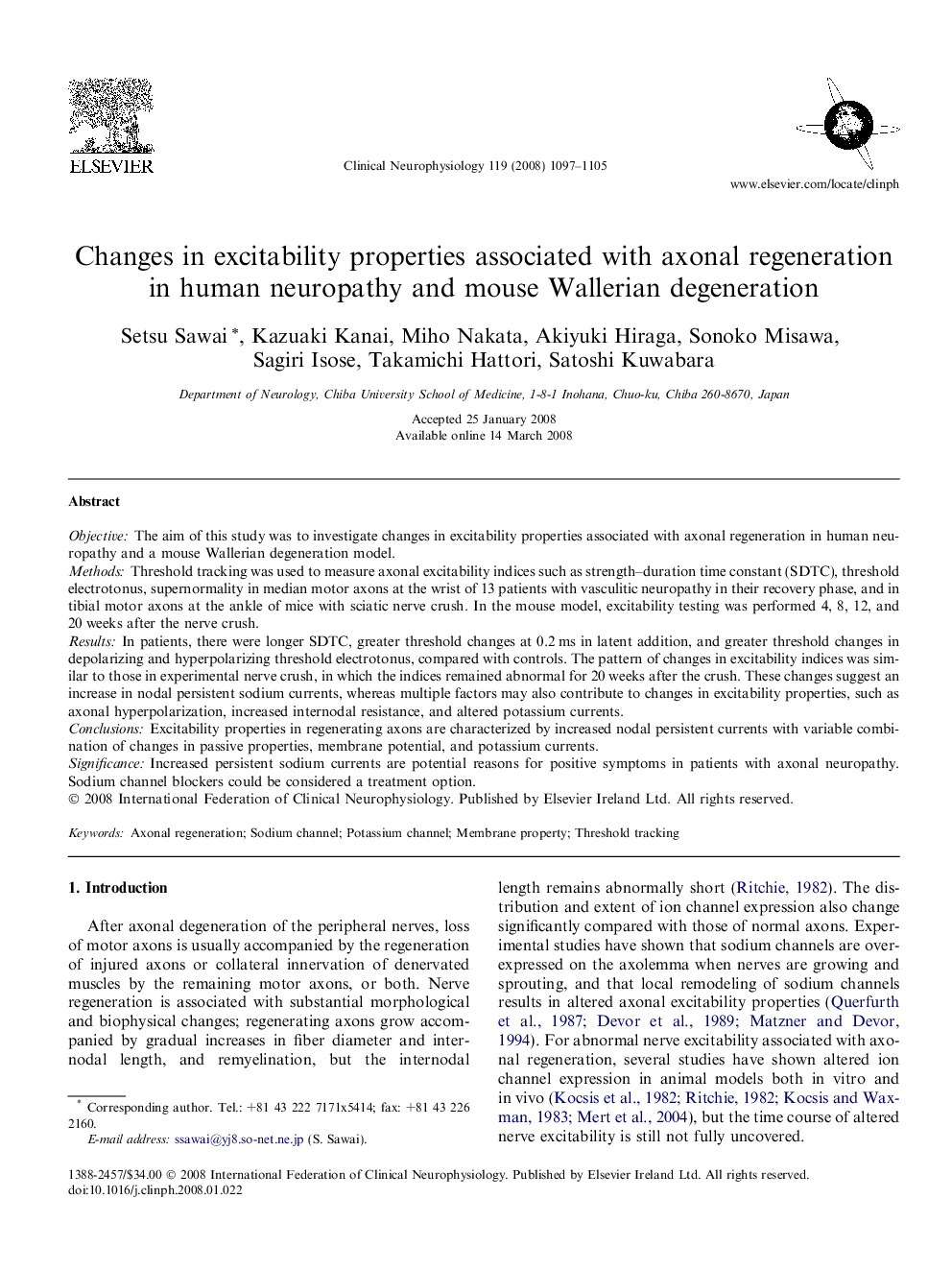| Article ID | Journal | Published Year | Pages | File Type |
|---|---|---|---|---|
| 3047597 | Clinical Neurophysiology | 2008 | 9 Pages |
ObjectiveThe aim of this study was to investigate changes in excitability properties associated with axonal regeneration in human neuropathy and a mouse Wallerian degeneration model.MethodsThreshold tracking was used to measure axonal excitability indices such as strength–duration time constant (SDTC), threshold electrotonus, supernormality in median motor axons at the wrist of 13 patients with vasculitic neuropathy in their recovery phase, and in tibial motor axons at the ankle of mice with sciatic nerve crush. In the mouse model, excitability testing was performed 4, 8, 12, and 20 weeks after the nerve crush.ResultsIn patients, there were longer SDTC, greater threshold changes at 0.2 ms in latent addition, and greater threshold changes in depolarizing and hyperpolarizing threshold electrotonus, compared with controls. The pattern of changes in excitability indices was similar to those in experimental nerve crush, in which the indices remained abnormal for 20 weeks after the crush. These changes suggest an increase in nodal persistent sodium currents, whereas multiple factors may also contribute to changes in excitability properties, such as axonal hyperpolarization, increased internodal resistance, and altered potassium currents.ConclusionsExcitability properties in regenerating axons are characterized by increased nodal persistent currents with variable combination of changes in passive properties, membrane potential, and potassium currents.SignificanceIncreased persistent sodium currents are potential reasons for positive symptoms in patients with axonal neuropathy. Sodium channel blockers could be considered a treatment option.
